
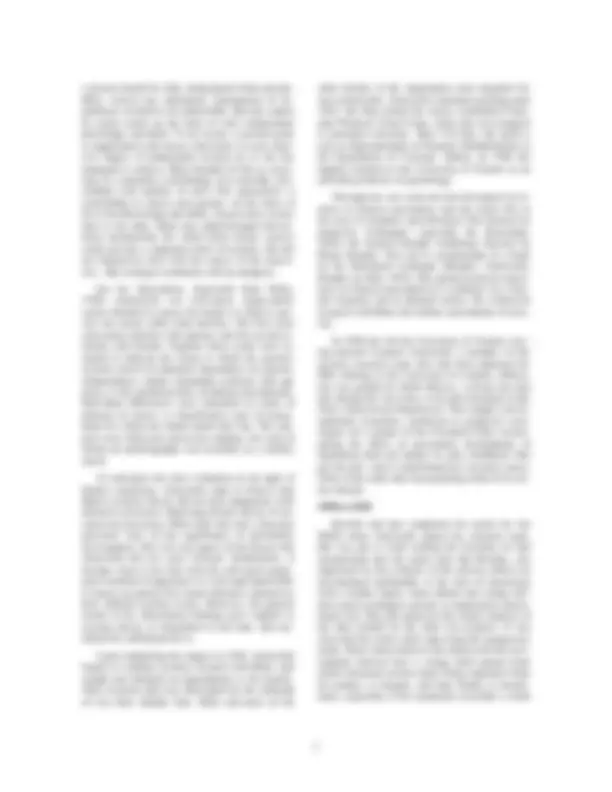
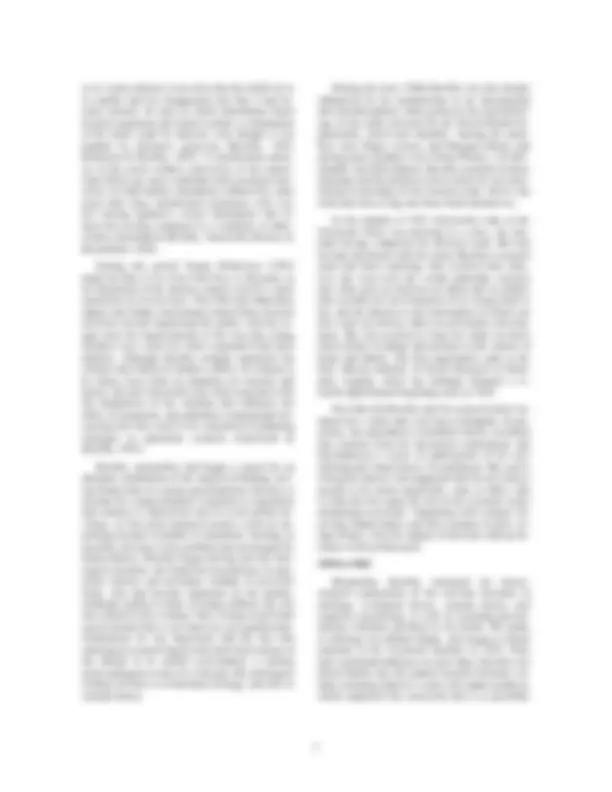

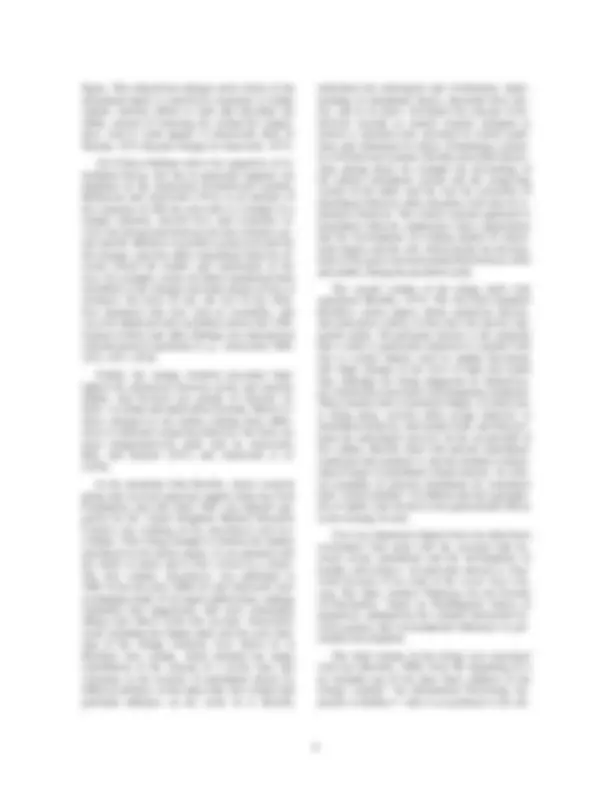
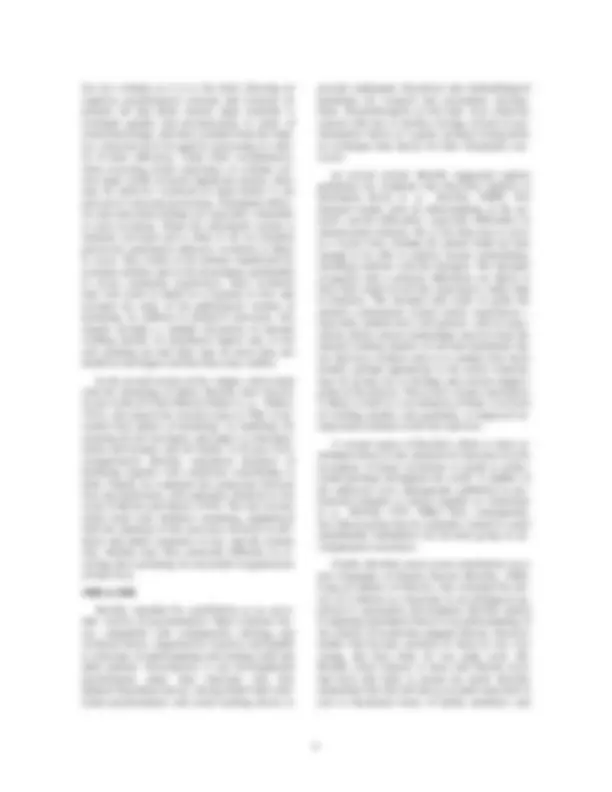
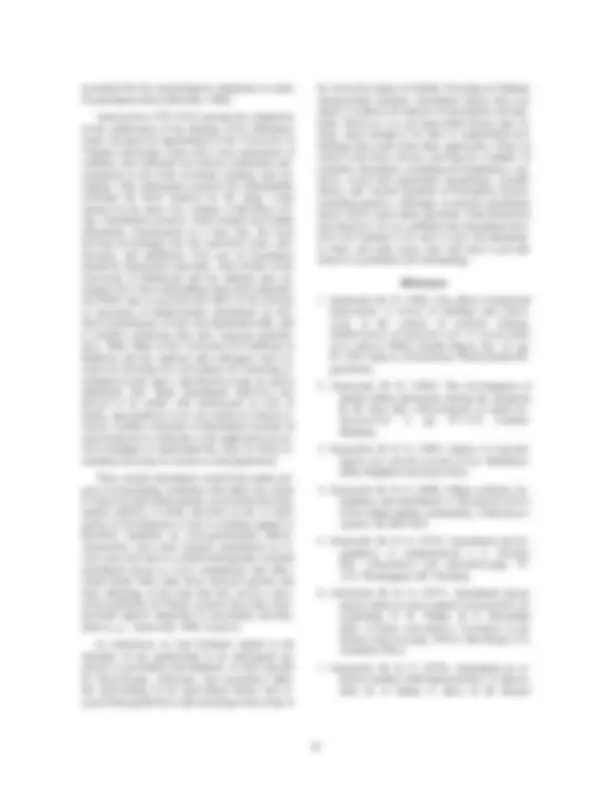


Study with the several resources on Docsity

Earn points by helping other students or get them with a premium plan


Prepare for your exams
Study with the several resources on Docsity

Earn points to download
Earn points by helping other students or get them with a premium plan
Community
Ask the community for help and clear up your study doubts
Discover the best universities in your country according to Docsity users
Free resources
Download our free guides on studying techniques, anxiety management strategies, and thesis advice from Docsity tutors
A historical account of the collaboration between John Bowlby and Mary Ainsworth in the development of attachment theory. Beginning with their separate research on personality development, the text details their experiences at the London Child Guidance Clinic and their adoption of an ethological approach. Despite challenges, they continued to explore the effects of mother-child separation and the development of attachment behavior.
What you will learn
Typology: Study notes
1 / 12

This page cannot be seen from the preview
Don't miss anything!







The distinguishing characteristic of the theory of attachment that we have jointly developed is that it is an ethological approach to personality develop- ment. We have had a long and happy partnership in pursuing this approach. In this article we wish to give a brief historical account of the initially sepa- rate but compatible approaches that eventually merged in the partnership, and how our contribu- tions have intertwined in the course of developing an ethologically oriented theory of attachment and a body of research that has both stemmed from the theory and served to extend and elaborate it.
Before 1950
Even before beginning graduate training, each of us became keenly interested in personality develop- ment and the key role played in it by the early inter- action between children and parents. In Bowlby's case this was kindled by volunteer work in a resi- dential school for maladjusted children, which fol- lowed his undergraduate studies in medicine at Cambridge University. Two children especially im-
pressed him. One was an isolated, affectionless ado- lescent who had never experienced a stable relation- ship with a mother figure, and the other was an anx- ious child who followed Bowlby around like a shadow. Largely because of these two children, Bowlby resolved to continue his medical studies to- ward a specialty in child psychiatry and psychother- apy, and was accepted as a student for psychoana- lytic training. From early in his training he believed that analysts, in their preoccupation with a child's fantasy life, were paying too little attention to actual events in the child's real life. His experience at the London Child Guidance Clinic convinced him of the significant role played by interaction with parents in the development of a child's personality, and of the ways in which this interaction had been influenced by a parent's early experiences with his or her own parents. His first systematic research was begun also at the London Child Guidance Clinic, where he compared 44 juvenile thieves with a matched control group and found that prolonged experiences of mother-child separation or deprivation of maternal
University of Virginia
Tavistock Clinic, London England
This is a historical account of the partnership in which Bowlby and Ainsworth participated to develop attach- ment theory and research. Beginning with their separate approaches to understanding personality development before Ainsworth joined Bowlby's research team at the Tavistock Clinic in London for 4 years, it describes the origins of the ethological approach that they adopted. After Ainsworth left London, her research in Uganda and in Baltimore lent empirical support to Bowlby's theoretical constructions. The article shows how their contribu- tions to attachment theory and research interdigitated in a partnership that endured for 40 years across time and distance.
This article was originally presented as a Distinguished Scientific Contributions award address at the 98th Annual Conven- tion of the American Psychological Association in Boston in August 1990. Author's note. John Bowlby's death on Septem- ber 2, 1990, at his summer home on the Isle of Skye in Scotland, prevented him from completing all that he intended to do in preparing this article for publication. As his coauthor I am greatly saddened by his death, but am secure in the knowledge that he would have wished me to complete the task.
American Psychologist. Vol. 46 (4) April 1991, pp. 333-341.
care were much more common among the thieves than in the control group, and that such experiences were especially linked to children diagnosed as af- fectionless (Bowlby, 1944).
The outbreak of war in 1939 interrupted Bowlby's career as a child psychiatrist but brought him useful research experience in connection with officer selection and with a new group of congenial associates, some of whom at the end of the war joined together to reorganize the Tavistock Clinic. Soon afterward the clinic became part of the Na- tional Health Service, and Bowlby served as full- time consultant psychiatrist and director of the De- partment for Children and Parents. There he also picked up the threads of his clinical and research interests.
Unfortunately, the Kleinian orientation of sev- eral members of the staff made it difficult to use clinic cases for the kind of research Bowlby wanted to undertake. He established a research unit of his own, which began operations in 1948. Convinced of the significance of real-life events on the course of child development, he chose to focus on the effects of early separation from the mother because separa- tion was an event on record, unlike disturbed family interaction, of which, in those days, there were no adequate records.
Members of the research team began two re- search projects, one retrospective, the other prospec- tive. The retrospective project was a follow-up study of 66 school-age children who had experienced separation from their families in a tuberculosis sana- torium at some time between the ages of one and four years, and who had subsequently returned home. The prospective project was undertaken sin- gle-handedly by James Robertson, then a social worker, who had had experience in Anna Freud's wartime nursery. Robertson observed young chil- dren's behavior as they underwent separation in three different institutional settings. Where possible, he observed the children's behavior in interaction with parents at home, both prior to the separation and after they were reunited with them. Bowlby himself undertook a third project, in response to a request by the World Health Organization (WHO) to prepare a report on what was known of the fate of children without families. This request led him to read all the available literature on separation and maternal deprivation, and to travel widely to find out
what was being done elsewhere about the care of motherless children. The report was published both by WHO as a monograph entitled Maternal Care and Mental Health (Bowlby, 1951) and subse- quently in a popular Penguin edition with the title Child Care and the Growth of Love (Bowlby & Ainsworth, 1965).
Let us turn now to the beginnings of Ainsworth's career. She entered the honor course in psychology as an undergraduate at the University of Toronto, hoping (as many do) to understand how she had come to be the person she was, and what her parents had to do with it. She was interested in the whole wide range of courses available to her, but in two particularly. One was run as a class experiment by S. N. F. Chant, in which she learned that research is a fascinating pursuit. The other, taught by William E. Blatz, focused on Blatz's newly formulated theory of security as an approach to understanding personality development. After graduation Ainsworth continued on at the University of Toronto as a graduate stu- dent, and was delighted when Blatz proposed that she base her dissertation research on his security theory.
Because she carried some highlights of security theory with her into attachment theory, it is appro- priate here to say something about it (Blatz, 1966). 1 Security, as its Latin root— sine cura —would sug- gest, means "without care" or "without anxiety. " According to Blatz, there are several kinds of secu- rity, of which the first to develop is what he called immature dependent security. Infants, and to a de- creasing extent young children, can feel secure only if they can rely on parent figures to take care of them and take responsibility for the consequences of their behavior. Children's appetite for change leads them to be curious about the world around them and to explore it and learn about it. But learning itself involves insecurity. If and when children become uneasy or frightened while exploring, they are nev- ertheless secure if they can retreat to a parent figure, confident that they will receive comfort and reassur- ance. Thus the parent's availability provides the child with a secure base from which to explore and learn.
As children gradually gain knowledge about the world and learn skills to cope with it, they can in- creasingly rely on themselves and thus acquire a gradually increasing basis for independent security. By the time of reaching maturity, according to Blatz,
1 Blatz's security theory was largely embedded in an oral tradition, from which those who listened drew different mean- ings. Ainsworth has dwelt on those aspects that particularly influenced her at the time. Blatz's own 1966 account contained much that is at variance with what Ainsworth carried into attachment theory.
or so. Upon reunion it was clear that the child's tie to its mother had not disappeared, but that it had be- come anxious. In cases in which datachment lasted beyond separation and initial reunion a continuation of the bond could be inferred, even though it was masked by defensive processes (Bowlby, 1953; Robertson & Bowlby, 1952). A classificatory analy- sis of the social worker's interviews of the sanato- rium follow-up cases confirmed that persistent inse- curity of child-mother attachment endured for some years after long, institutional separation, with very few having regained a secure attachment—but in- deed few having continued in a condition of affec- tionless detachment (Bowlby, Ainsworth, Boston, & Rosenbluth, 1956).
During this period Jimmy Robertson (1952) made his film A Two-Year-Old Goes to Hospital, as an illustration of the distress caused even by a short separation of several days. This film had immediate impact and Jimmy increasingly turned from research activities toward impressing the public with the ur- gent need for improvements in the way that young children were cared for while separated from their families. Although Bowlby strongly supported the reforms that followed Jimmy's efforts, he refused to be drawn away from an emphasis on research and theory. He and Ainsworth were both concerned with the multiplicity of the variables that influence the effect of separation, and published a monograph dis- cussing how they need to be considered in planning strategies in separation research (Ainsworth & Bowlby, 1953).
Bowlby, meanwhile, had begun a search for an adequate explanation of the empirical findings, hav- ing found none in current psychoanalytic theories to account for young children's responses to separation and reunion, or indeed how the tie to the mother de- velops. At this point Konrad Lorenz's work on im- printing became available in translation. Sensing its possible relevance to his problem and encouraged by Julian Huxley, Bowlby began delving into the etho- logical literature. He found the descriptions of sepa- ration distress and proximity seeking of precocial birds, who had become imprinted on the mother, strikingly similar to those of young children. He was also struck by the evidence that a strong social bond can be formed that is not based on oral gratification. Furthermore he was impressed with the fact that ethological research began with field observations of the animal in its natural environment, a starting point analogous to that of a clinician. His ethological reading led him to evolutionary biology, and also to systems theory.
During the early 1950s Bowlby was also deeply influenced by his membership in an international and interdisciplinary study group on the psychobiol- ogy of the child convened by the World Health Or- ganization, which met annually. Among the mem- bers were Piaget, Lorenz, and Margaret Mead, and among guest speakers were Julian Huxley, von Ber- talanffy, and Erik Erikson. Bowlby reported on these meetings and the plethora of new ideas he was enter- taining at meetings of the research team, but no one took time then to dig into these fields themselves.
In the autumn of 1953 Ainsworth's time at the Tavistock Clinic was drawing to a close, her hus- band having completed his doctoral work. She had become fascinated with the issues Bowlby's research team had been exploring. She resolved that wher- ever she went next she would undertake research into what goes on between an infant and its mother that accounts for the formation of its strong bond to her, and the absence or the interruption of which can have such an adverse effect on personality develop- ment. She also resolved to base her study on direct observations of infants and mothers in the context of home and family. The first opportunity came at the East African Institute of Social Research in Kam- pala, Uganda, where her husband obtained a re- search appointment beginning early in 1954.
Her link with Bowlby and his research team con- tinued for a while after arriving in Kampala. In par- ticular, she remembers a document that he circulated that resulted from his theoretical explorations and foreshadowed a series of publications of his new ethologically based theory of attachment. She read it with great interest, but suggested that his new theory needed to be tested empirically. And, in effect, that is what she has spent the rest of her research career attempting to provide—beginning with a project ob- serving Ganda babies and their mothers in their vil- lage homes, with the support of the East African In- stitute of Social Research.
1954 to 1963
Meanwhile, Bowlby continued his theory- oriented explorations of the relevant literature in ethology, evoluation theory, systems theory, and cognitive psychology, as well as rereading psycho- analytic literature pertinent to his theme. His guide to ethology was Robert Hinde, who began to attend seminars at the Tavistock Institute in 1954. They had a profound influence on each other. Bowlby was drawn further into the animal research literature, no- tably including Harlow's work with infant monkeys, which supported his conviction that it is proximity
to and close bodily contact with a mother figure that cements the infant's attachment rather than the pro- vision of food. On the other hand, the connection with Bowlby led Hinde to study both the interaction of infant rhesus monkeys with their mothers and the effects of mother-infant separation; his findings lent experimental support to Bowlby's position. Al- though much influenced by the ethologists' observa- tions of other species, Bowlby remained a clinician, continuing to see children and families and to prac- tice individual and family psychotherapy. Moreover, for 20 years he ran a mother's group in a well-baby clinic, learning much from his informal observations of mother-child interaction there, and from the re- ports of mothers about their children's behavior.
Several classic papers emerged from this theo- retical ferment, in each of which his new ethological approach was contrasted with then current psycho- analytic theories: first, "The Nature of the Child's Tie to His Mother" (Bowlby, 1958), then in rapid succession two papers on separation anxiety (Bowlby, 1960b, 1961b), and three on grief and mourning (Bowlby, 1960a, 1961a, 1963). In the first paper he proposed that a baby's attachment came about through a repertoire of genetically based be- haviors that matured at various times from birth to several months of age, and became focused on the principal caregiver, usually the mother. This reper- toire included crying, sucking, smiling, clinging, and following—of which he considered the latter two the most central. He also discussed how these behaviors were activated and terminated, at first independently before an attachment was formed, but afterward as organized together toward the attachment figure. Finally, he emphasized the active nature of attach- ment behavior, contrasting it with the passive con- ception of dependence. Whereas in traditional the- ory, dependence is considered inevitable in infancy, regressive and undesirable in later years, and having no biological value, he conceived of attachment be- havior as a major component of human behavioral equipment, on a par with eating and sexual behavior, and as having protection as its biological function, not only in childhood but throughout life. Its pres- ence in humans, as in many other species, could be understood in terms of evolution theory.
The papers on separation anxiety were based partly on research by a new member of the team, Christoph Heinicke (e. g. , Heinicke, 1956; Heinicke & Westheimer, 1966), but chiefly on Robertson's observations, which were discussed earlier. Bowlby reviewed six psychoanalytic explanations of separa- tion anxiety, but rejected them in favor of his own
hypothesis. He beleived that separation anxiety oc- curs when attachment behavior is activated by the absence of the attachment figure, but cannot be ter- minated. It differs from fright, which is aroused by some alarming or noxious feature of the environ- ment and activates escape responses. However, fright also activates attachment behavior, so that the baby not only tries to escape from the frightening stimulus but also tries to reach a haven of safety— the attachment figure. Later in infancy, the baby is capable of expectant anxiety in situations that seem likely to be noxious or in which the attachment fig- ure is likely to become unavailable. He emphasized that only a specific figure, usually the mother figure, could terminate attachment behavior completely once it had been intensely activated. He went on to point out that hostility toward the mother is likely to occur when attachment behavior is frustrated, as it is when the child is separated from her, rejected by her, or when she gives major attention to someone else. When such circumstances are frequent or pro- longed, primitive defensive processes may be acti- vated, with the result that the child may appear to be indifferent to its mother (as in the detachment attrib- utable to separation) or may be erroneously viewed as healthily independent.
Whereas separation anxiety dominates the pro- test phase of response to separation, with its height- ened but frustrated attachment behavior mingled with anger, grief and mourning dominate the despair phase, as the frustration of separation is prolonged. Bowlby disagreed with the psychoanalytic theorists who held that infants and young children are incapa- ble of mourning and experiencing grief, and also with those who, like Melanie Klein, believed that the loss of the breast at weaning is the greatest loss in infancy. In his papers on grief and mourning he pointed to the similarities between adults and young children in their responses to loss of a loved one: thoughts and behavior expressing longing for the loved one, hostility, appeals for help, despair, and finally reorganization. Many fellow psychoanalysts have vigorously rejected his views on grief and mourning, as indeed they have protested his etho- logical approach to the child's tie to the mother and his interpretation of separation anxiety. Having been trained in another theoretical paradigm, they have found it difficult to break out of it enough to enter- tain a new way of viewing old problems.
Meanwhile, in Uganda, Ainsworth had begun her study of Ganda babies. She assembled a sample of 28 unweaned babies and their mothers from sev- eral villages near Kampala and, with a splendid in-
the mother. Notes made during the visit were later dictated in a narrative account, and then transcribed; these raw data took up two full drawers in a filing cabinet. (Needless to say the data took years to ana- lyze, even with the help of many valued research associates and student assistants. )
The home visitor had been alerted to note infant behaviors that had been earlier identified as attach- ment behaviors by both Bowlby and Ainsworth, and to pay particular attention to situations in which they were most likely to occur, and to the mother's re- sponse to them. Data reduction procedures included event coding, rating, and classification. The data analysis yielded information about both normative development and how individual differences in the security or insecurity of the infants' attachment to their mothers were related to the mothers' behavior.
At the end of the baby's first year, baby and mother were introduced to a 20-minute laboratory situation—the strange situation—a preliminary re- port of which was made by Ainsworth and Wittig (1969). Although this situation was originally de- signed for a normative exploration, it turned out to provide a relatively quick method of assessment of infant-mother attachment. This procedure soon be- came widely used, if not always wisely and well, and has quite overshadowed the findings of the re- search project that gave rise to it and on which its validity depended. However, the longitudinal home visit data, (which include information about how mother's behavior is linked to the course of infant development) and the strange situation together have yielded important information about the develop- ment of attachment in infancy.
The findings of the data analyses of both the strange situation and the home visits were published in a series of articles beginning in 1969 as each analysis was completed. The original research re- ports were coauthored by the research associate or assistant who was chiefly involved in each piece of data analysis. Ainsworth is deeply indebted to their dedicated and creative contributions.
Highlights of the findings are as follows. Moth- ers who fairly consistently responded promptly to infant crying early-on had infants who by the end of the first year cried relatively little and were securely attached. Indeed, mothers who were sensitively and appropriately responsive to infant signals in general, including feeding signals, fostered secure infant- mother attachment (Ainsworth & Bell, 1969; Ains- worth, Blehar, Waters, & Wall, 1978; Bell & Ains- worth, 1972). As Bowlby implied from the begin-
ning, close bodily contact with the mother termi- nates attachment behavior that has been intensely activated. Full-blown crying indicates such intense activation, and indeed our mothers' most usual re- sponse to such crying was to pick the baby up (Bell & Ainsworth, 1972). It was not the total amount of time that the baby was held by the mother that pro- moted secure attachment so much as the contin- gency of the pick-up with infant signals of desire for contact, and the manner in which the mother then held and handled the baby. Babies who were se- curely attached not only responded positively to be- ing picked up, being readily comforted if they had been upset, but also they responded positively to being put down, and were likely to turn toward ex- ploration. Timely and appropriate close bodily con- tact does not "spoil" babies, making them fussy and clingy (Ainsworth, 1979).
About the middle of the first year the babies had clearly become attached, and one of the signs of this was that they began to show distress when mother left the room (separation anxiety). However, babies whose attachment was secure seemed to build up a working model of mother as being available even though out of sight, and thus came to protest little everyday departures at home less often than did in- fants who were insecurely attached. On the other hand, they were more likely than insecure babies to greet the mother positively upon reunion, and less likely to greet her grumpily or with a cry (Stayton & Ainsworth, 1973; Stayton, Ainsworth, & Main, 1973). However, if the mother left when the baby was mildly stressed by an unfamiliar situation, as in the strange situation, even a secure child was likely to protest her departure. A useful paradox that emerged was that some infants who were clearly insecure at home, showing frequent separation pro- test or crying a lot in general, were apparently indif- ferent to their mothers' departure in the strange situation and avoided them upon reunion. Our inter- pretation was that under the increased stress of the unfamiliar situation a defensive process is activated, akin to the detachment that develops in young chil- dren undergoing major separations (Ainsworth & Bell, 1970; Ainsworth et al. , 1978). Although the avoidant infants had themselves experienced no ma- jor separations, their mothers had tended to be re- jecting at home during the first year, especially when their babies sought contact, as well as being generally insensitive to infant signals.
In regard to socialization, the findings suggest that infants have a natural behavioral disposition to comply with the wishes of the principal attachment
figure. This disposition emerges most clearly if the attachment figure is sensitively responsive to infant signals, whereas efforts to train and discipline the infant, instead of fostering the wished-for compli- ance, tend to work against it (Ainsworth, Bell, & Stayton, 1974; Stayton, Hogan, & Ainsworth, 1971).
All of these findings tend to be supportive of at- tachment theory, but one in particular supports our emphasis on the interaction of behavioral systems. Bretherton and Ainsworth (1974), in an analysis of the responses of 106 one-year-olds to a stranger in a strange situation, showed how such responses in- volve the interactions between the fear-wariness sys- tem and the affiliative (sociable) system activated by the stranger, and also affect attachment behavior di- rected toward the mother and exploration of the toys. For example, nearly all babies manifested both sociability to the stranger and some degree of fear or wariness—the more of one, the less of the other. Few displayed only fear with no sociability, and very few displayed only sociability and no fear. Pub- lication of these and other findings was interspersed with theoretical expositions (e. g. , Ainsworth, 1969, 1972, 1977, 1979).
Finally, the strange situation procedure high- lighted the distinction between secure and insecure infants, and between two groups of insecure in- fants—avoidant and ambivalent-resistant. Much evi- dence emerged in our studies relating these differ- ences to maternal caregiving behavior, but these are most comprehensively dealt with by Ainsworth, Bell, and Stayton (1971) and Ainsworth et al. (1978).
In the meantime John Bowlby, whose research group had received generous support from the Ford Foundation, and who from 1963 was himself sup- ported by the United Kingdom Medical Research Council, was working on his Attachment and Loss volumes. This trilogy brought to fruition the themes introduced in his earlier papers. It was planned with the whole in mind, and is best viewed as a whole. The first volume, Attachment, was published in
elaborated the ethological and evolutionary under- pinnings of attachment theory, discarded drive the- ory, and in its place, developed the concept of be- havioral systems as control systems designed to achieve a specified end, activated in certain condi- tions and terminated in others. Postulating a plural- ity of behavioral systems, Bowlby described interac- tions among them, for example the dovetailing of the infant's attachment system and the caregiving system of the adult, and the way the activation of attachment behavior often alternates with that of ex- ploratory behavior. The control systems approach to attachment behavior emphasizes inner organization and the development of working models of attach- ment figures and the self, which permit the develop- ment of the goal-corrected partnership between child and mother during the preschool years.
The second volume of the trilogy dealt with separation (Bowlby, 1973). The first half expanded Bowlby's earlier papers about separation anxiety, and presented a theory of fear that was merely sug- gested earlier. Of particular interest is the proposal that a child is genetically disposed to respond with fear to certain stimuli, such as sudden movement and sharp changes in the level of light and sound that, although not being dangerous in themselves, are statistically associated with dangerous situations. These natural clues to potential danger, of which one is being alone, activate either escape behavior or attachment behavior, and usually both, and thus pro- mote the individual's survival. In the second half of the volume, Bowlby dealt with anxious attachment, conditions that promote it, and the intimate relation- ship of anger to attachment-related anxiety. As clini- cal examples of anxious attachment he considered both "school phobias" of children and the agorapho- bia of adults, and stressed cross-generational effects in the etiology of each.
Two very important chapters have too often been overlooked. One dealt with the essential link be- tween secure attachment and the development of healthy self-reliance—of particular interest to Ains- worth because of its roots in the secure base con- cept. The other, entitled "Pathways for the Growth of Personality," based on Waddington's theory of epigenesis, emphasized the constant interaction be- tween genetic and environmental influences in per- sonality development.
The third volume of the trilogy was concerned with loss (Bowlby, 1980). Near the beginning of it he included one of the most basic chapters of the trilogy—entitled "An Information Processing Ap- proach to Defence"—that is as pertinent to the ear-
accounted for his psychological symptoms in terms of attachment theory (Bowlby, 1990).
Ainsworth in 1975-1976, nearing the completion of the publication of the findings of her Baltimore study, accepted an appointment at the University of Virginia and began work with a new generation of students, and continued her interest (sometimes par- ticipation) in the work of former students and col- leagues. This subsequent research has substantially extended the field, inspired by the larger vistas opened by the latter two volumes of Bowlby's tril- ogy. Attachment research, which usually used infant attachment classification as a base line, has been moving increasingly into the preschool years, ado- lescence, and adulthood. Two sets of researchers should be mentioned especially. Alan Sroufe of the University of Minnesota and his students and col- leagues have been undertaking long-term longitudi- nal follow-ups to ascertain the effect of the security or insecurity of Infant-mother attachment on chil- dren's performance of later developmental tasks, and to identify conditions that alter expected perform- ance. Mary Main of the University of California at Berkeley and her students and colleagues have fo- cused on devising new procedures for assessing at- tachment at later ages—specifically at age six and in adulthood. Her Adult Attachment Interview has proved to be useful with adolescents as well as adults, and promises to be very useful in clinical re- search. Another extension of attachment research of special interest to clinicians is the application of cur- rent techniques to understand the ways in which at- tachment develops in various at-risk populations.
Thus, current attachment research has made pro- gress in elucidating conditions that affect the extent to which an individual remains on an initial develop- mental pathway or shifts direction at one or more points in development. It also is yielding support to Bowlby's emphasis on cross-generational effects. Ainsworth's own chief original contribution in re- cent years has been to extend ethologically oriented attachment theory to cover attachments and affec- tional bonds other than those between parents and their offspring, in the hope that this can be a theo- retical guideline for future research into other inter- personal aspects important in personality develop- ment (e. g. , Ainsworth, 1989; in press).
In conclusion, we feel fortunate indeed in the outcome of our partnership in an ethological ap- proach to personality development. At first rejected by theoreticians, clinicians, and researchers alike, the intertwining of an open-ended theory and re- search both guided by it and enriching it has come to
be viewed by many as fruitful. Focusing on intimate interpersonal relations, attachment theory does not aspire to address all aspects of personality develop- ment. However, it is an open-ended theory and, we hope, open enough to be able to comprehend new findings that result from other approaches. From its outset it has been eclectic, drawing on a number of scientific disciplines, including developmental, cog- nitive, social and personality psychology, systems theory, and various branches of biological science, including genetics. Although, at present, attachment theory leaves open many questions, both theoretical and practical, we are confident that attachment theo- rists will continue to be alert to new developments, in these and other areas, that will help to provide answers to problems still outstanding.
References
(Eds. ), Advances in the study of behavior (Vol. 9, pp. 1-51). San Diego, CA: Academic Press.
crying and maternal responsiveness. Child De- velopment , 43, 1171-1190.